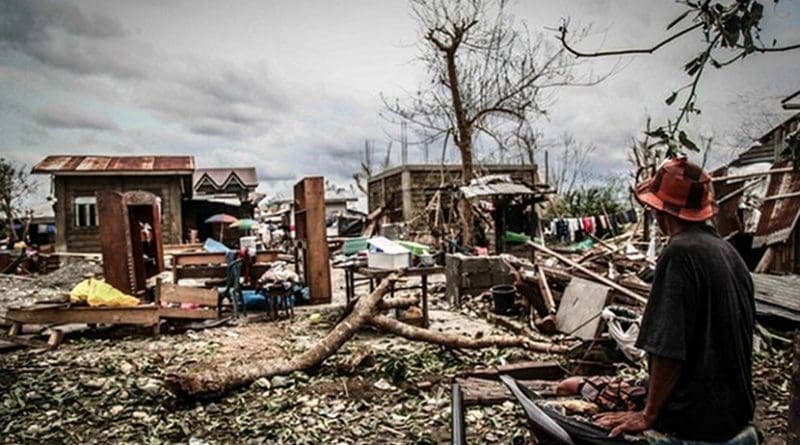Philippines: Landslides Caused By Typhoon Mangkhut Trap Miners
By BenarNews
By Jeoffrey Maitem, Karl Romano and Luis Liwanag
Philippine rescuers reported on Sunday that dozens of gold miners and their families could be trapped by a landslide that buried an old shaft and areas converted into living spaces in Benguet province as the death toll from Typhoon Mangkhut rises.
The typhoon slammed into the Philippines on Saturday bringing winds of 170 kph (105 mph) with gusts of 260 kph (160 mph), killing as many as 60 people and government and municipal officials expect the death toll to grow.
Francis Tolentino, a senior government official sent by President Rodrigo Duterte to manage relief and response efforts, said at least 42 landslides were triggered by heavy rains dumped by Mangkhut.
Mayor Victorio Palangda of Itogon town in Benguet province said that 32 people were confirmed dead in his town alone, while up to 50 are still missing. A small scale mining bunkhouse believed to shelter dozens of people also was buried.
“I can’t begin to accept this, but it looks like the casualties here are going to go up to at least 100,” he said.
The town teems with small scale mining operations. Palangda said mining company Benguet Corp. abandoned the bunkhouse long ago, but miners had often used it as living quarters.
“The casualties can rise because we fear there are people in the bunkhouse and we are not certain of the numbers,” he said. “We are saying that 40 to 50 people were there. They were inside when the building went missing, people saw that.
“That is what I fear. That if this is true, the number of dead here due to Ompong could really rise beyond 100,” he said using the Philippine name for Mangkhut.
Another official said he was caught off guard by the outcome of the storm
“We were prepared for the typhoon buy we cannot do anything with the landslide. The problem is it’s unexpected,” said Mayor Mauricio Domogan, of the nearby mountain resort city of Baguio.
In Cagayan province to the northeast, Gov. Manuel Mamba on Sunday said evacuees whose houses were destroyed remain at shelters while others have started to return.
“We received no reports of casualties so far. Hopefully, we will be zero casualty,” he said.
“While the typhoon has slowed down and continued to weaken according to our weather reports, its threat is not yet over. So, let us not be complacent. I urge the people to continue to be alert and on guard of the possible effects of the typhoon,” she said.
Mangkhut moves on
After devastating the Philippines, the storm appeared headed to Hong Kong where an estimated 227,000 Filipinos working there mostly as maids or care givers were advised to stay indoors. The typhoon, spared Hong Kong and hit southern China with sustained winds of 160 kph (100 mph).
Virginia Orogo, secretary of the department of Social Welfare and Development, said relief is being provided to more than 31,000 families affected by the typhoon.
The Philippines sits on a typhoon belt and endures up to 20 storms a year, some of them devastating.
In 2012, more than 1,000 people died as Typhoon Bopha swept across eastern Mindanao bringing with it winds gusting up to 200 kph (124 mph). A year earlier, more than 600 died when Tropical Storm Washi slammed into the southern island. Last year, Typhoon Haima hit the country.
In November 2013, Supertyphoon Haiyan left at least 6,300 people dead and scores missing. With winds of up to 235 kph (146 mph), Haiyan blew away homes and triggered massive flooding.

